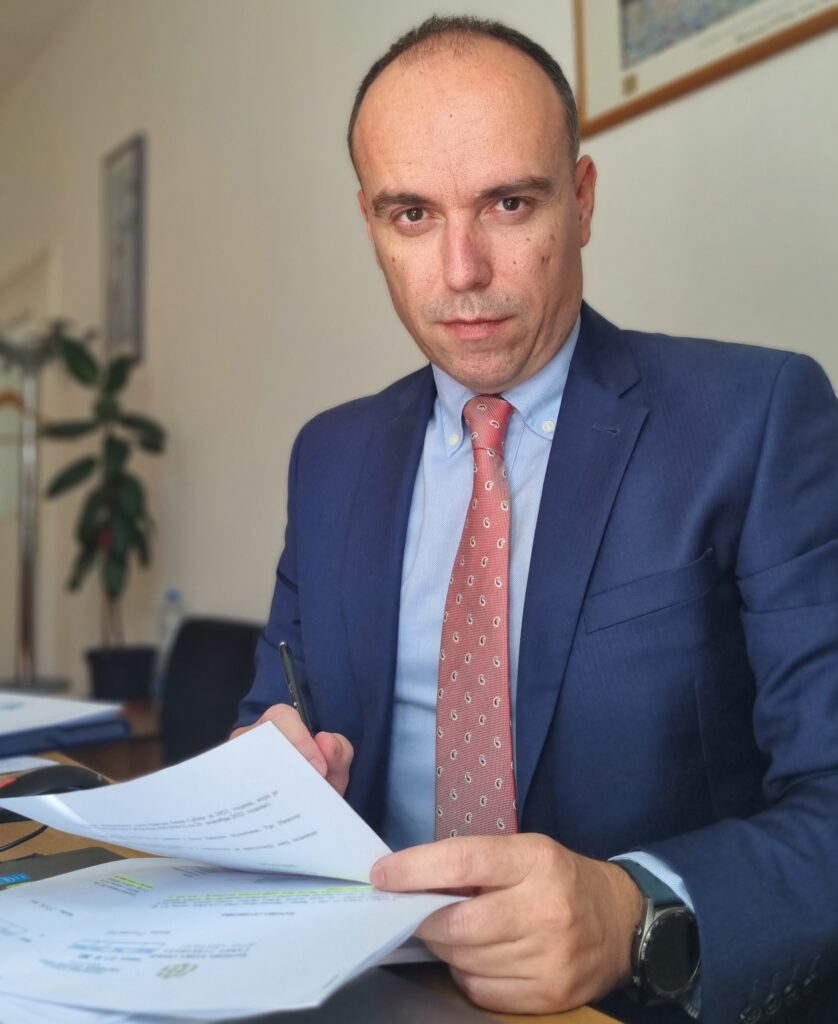An analysis of Serbia’s economic trends in early 2025, from foreign trade imbalances and tariff risks to fiscal strain and the limits of political stability
 Dr Ivan Nikolić, Associate at the Economics Institute in Belgrade, Editor of the monthly bulletin MAT and President of the Council of Governors of the National Bank of Serbia, offers a clear-eyed assessment of the key macroeconomic developments shaping the beginning of 2025. In this interview, he discusses the widening trade deficit, the vulnerability of the automotive sector, shifting export dynamics, FDI trends, and the fiscal pressures Serbia faces amid growing political and social uncertainty.
Dr Ivan Nikolić, Associate at the Economics Institute in Belgrade, Editor of the monthly bulletin MAT and President of the Council of Governors of the National Bank of Serbia, offers a clear-eyed assessment of the key macroeconomic developments shaping the beginning of 2025. In this interview, he discusses the widening trade deficit, the vulnerability of the automotive sector, shifting export dynamics, FDI trends, and the fiscal pressures Serbia faces amid growing political and social uncertainty.
What were the main reasons for the increase in Serbia’s foreign trade deficit in goods in February 2025, and how did imports and exports perform during that period?
In February, for the eighth consecutive month, the value of year-on-year foreign trade increased – by 2.2%. Within this framework, goods exports amounted to €2,412 million (a decrease of 4.1%), while goods imports reached €3,450 million (an increase of 7%), resulting in a trade deficit of €1,038 million (a rise of 46.6%).
The faster growth of imports compared to exports stemmed from the acceleration of the investment cycle, as well as increased disposable income among the population.
At the same time, exports were negatively affected by the weakened pace of economic activity in the Eurozone, which led to reduced external demand.
How will the increased US tariffs affect the European and Serbian automotive sectors, and what role does the new production line in the Kragujevac plant play in that context?
The European automotive industry is facing a serious crisis, brought on by a combination of structural changes, regulatory pressures and global competition. An industry that for decades served as a driving force of economic growth and employment is now threatened by falling production, job losses and a shrinking market share in favour of Asian competitors.
There is now growing concern about the possible introduction of high tariffs on car exports to the United States. Even as I answer your question, no one knows exactly what the tariffs will be – whether 10%, 25%, or even higher.
In any case, we are entering a difficult period, full of risk and uncertainty, including for many domestic companies in this sector.
As for the production of the Fiat Grande Panda, it is not directly threatened by the higher tariffs, since its key market is not North America. Let me remind you that this was also the case with the previous Fiat 500L, which only in 2014 sold more than 10,000 units in the US.
Without political stability, even sound macroeconomic policies can be undermined
Which sectors within Serbia’s Manufacturing Industry recorded the highest exports in the January–February 2025 period, and what are the key markets for those products?
In the first two months of this year, the sectors within the Manufacturing Industry that recorded the highest year-on-year export growth were:
– Basic metals production (€78.8 million or 20.1%)
– Food products manufacturing (€68.9 million or 17%)
– Fabricated metal products (excluding machinery) (€35.9 million or 15.4%)
– Chemicals and chemical products (€35.8 million or 14.7%)
The largest export markets for companies in the Basic Metals Production sector are Turkey and China. Within this sector, copper production leads the way, accounting for 62.1% of exports and recording a growth of 46.9% compared to January–February 2024.
How did the shift in the structure of imports and exports by purpose-based product groups affect Serbia’s overall foreign trade balance at the beginning of the year?
When viewed by purpose-based product groups, the largest impact on total export performance in the January–February 2025 period came from a decline in capital goods exports (contributing -2.9 percentage points), which accounted for 21.7% of total exports and fell by €134.1 million, or 11.7%, and from exports of intermediate goods (accounting for 41.2% of total exports, down €74.3 million or 3.7%).
On the other hand, imports were largely driven by the category of EU-unclassified goods by purpose (16.2% share, up by 23.2%), and imports of intermediate goods (32.3% share, up by 6.8%, contributing 2.2 percentage points).
 What does the dynamic of foreign direct investment (FDI) in Serbia show for January 2025, and how did expenditures related to dividends, interest and reinvested earnings affect the net balance?
What does the dynamic of foreign direct investment (FDI) in Serbia show for January 2025, and how did expenditures related to dividends, interest and reinvested earnings affect the net balance?
The inflow of FDI from non-residents into Serbia in January amounted to €224.4 million. While this is €380.1 million less than in the same month last year, it is worth noting that January 2024 was an exceptionally strong month, so it is too early to draw conclusions about this year’s FDI trend.
To fully assess the effects of FDI, it is important to consider that total primary income outflows based on FDI amounted to €179.7 million – of which €61.2 million related to dividend payments, €23.5 million to interest payments, and €95.0 million to reinvested earnings, which represent retained profits in foreign-owned companies (i.e. profits that were not paid out to owners).
Therefore, the net FDI inflow from non-residents into Serbia in January amounted to €44.7 million.
It should also be kept in mind that January – like any individual month – is not the most reliable basis for assessing the net effects of FDI, as income outflows are typically related to investments made in previous years.
How did student blockades and consumer protests affect retail trade turnover in February 2025?
The value of retail trade turnover in February 2025 was 3% higher in nominal terms compared to the same month of the previous year; however, in constant prices, turnover decreased by 0.5%. The weaker year-on-year performance in February can be attributed to several factors: the calendar effect (one day fewer than in February last year), consumer association boycotts of retail chains as a response to high prices, and student blockades, which introduced uncertainty and tension into the domestic consumer market and led to the postponement of some purchases to the following months (particularly in the case of certain durable goods).
The calendar effect had the strongest influence, as evidenced by the fact that, in the seasonally adjusted data series, year-on-year nominal consumption growth reached 6% – a rate comparable to the average recorded over the previous six months.
In any case, without political stability, there can be no macroeconomic stability. Political stability creates the conditions for long-term economic policy, increases investor confidence, and reduces the risk of currency crises. Without it, even sound macroeconomic policies can be undermined, leading to economic difficulties.
Which tax categories recorded the largest decline in February 2025, and what impact did this have on budget revenues and the fiscal outcome?
In the first two months of this year, the budget of the Republic of Serbia recorded a fiscal result of -25.7 billion dinars, which is 30.9 billion dinars worse than in the same period of the previous year.
This outcome is the result of a real increase in budget expenditures (5.9%) alongside a real decrease in budget revenues (-3.2%).
The decline in budget revenues was primarily driven by lower revenues from corporate profit tax, non-tax revenues, excise duties, and customs duties.
On the expenditure side, the main contributor to the increase was capital spending, which grew by 33.3%. This is generally seen as a positive indicator, as the state is attempting to compensate for weaker prospects in certain sectors of the economy by accelerating investment.
The trade deficit widened as imports outpaced exports, driven by investment momentum and household spending
